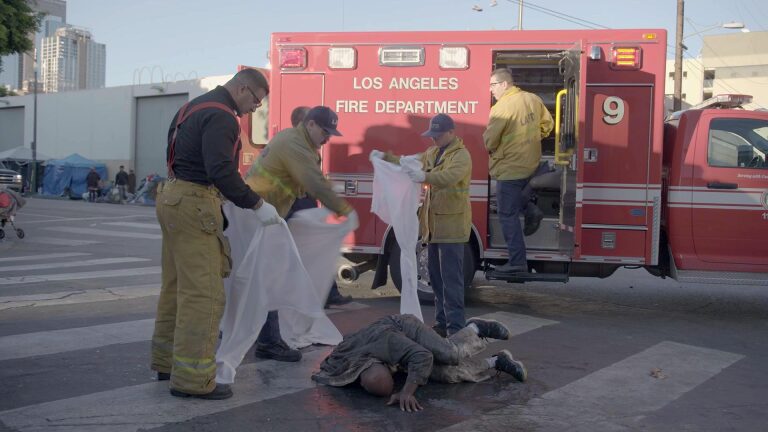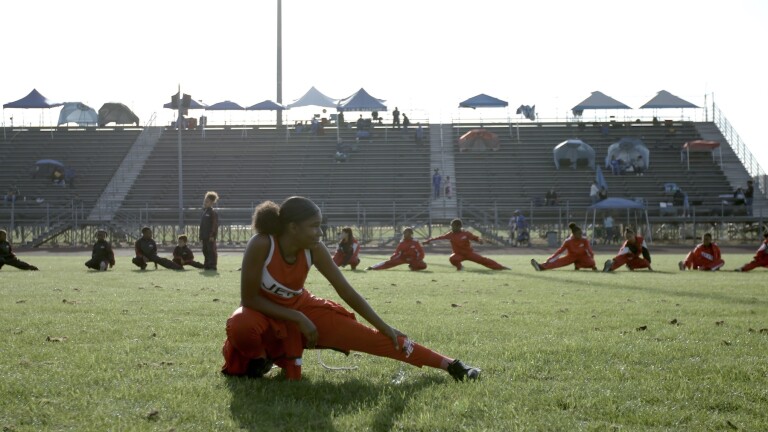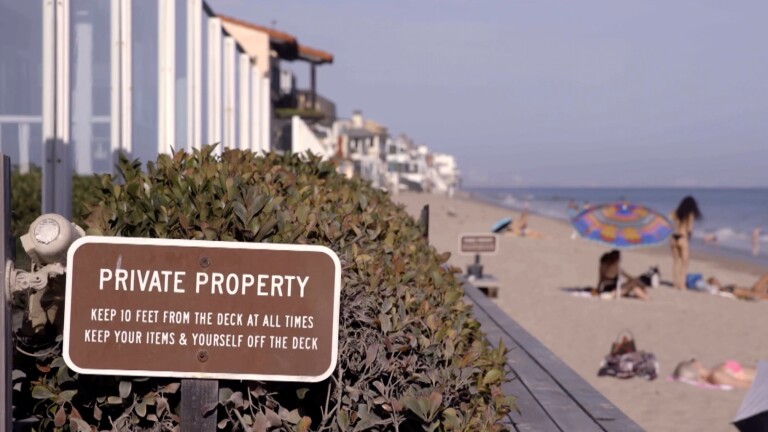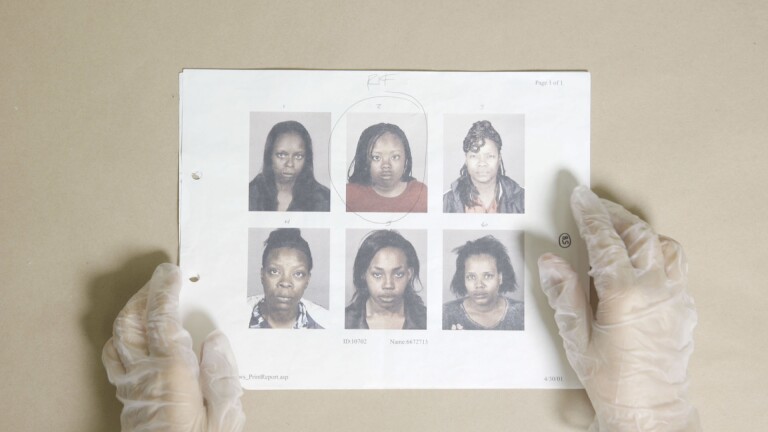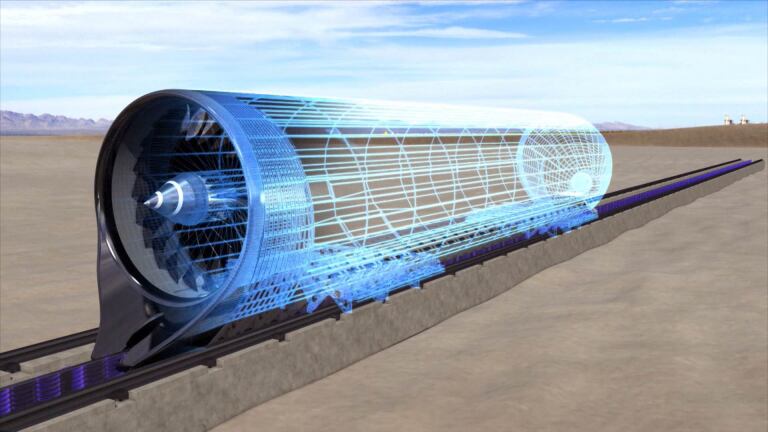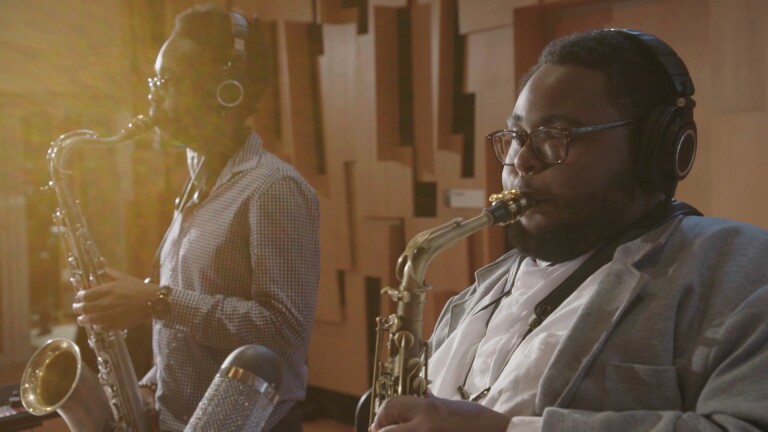
Hyperloop: Tube Travel at Near Supersonic Speed
Traveling in a tube at 750 miles an hour would take you from LA to SFO in 30 minutes. It’s called the Hyperloop. Pods carrying people would shoot through a frictionless tube powered by an electric motor. Now two competing LA companies are designing and testing the technology first proposed by Elon Musk. Reporter Nic Cha Kim looks at whether the Hyperloop is real or just hype.
Transcript
Nic Cha Kim: Years ago, weary travelers crossed this very desert on horseback. Since then, times have changed.
Engineer: 3-2-1... Start!
Nic Cha Kim: Zero to 135 mph in 1.9 seconds... On May 11, 2016, Hyperloop One conducted the first test of an electric motor for a new mode of transportation. After boats, trains, cars, and planes. Before we know it, we may soon get around town like this... or something close to it. And it's all because of an idea from visionary entrepreneur Elon Musk. Back in 2013, he announced a radical transportation concept. It came to him after being stuck in L.A. traffic.
Elon Musk: I have a name for it... which is called the Hyperloop.
Nic Cha Kim: But he's a bit busy running Tesla and SpaceX. So Elon open-sourced his concept and invited anybody to take the challenge. Two companies did and both happen to be in Los Angeles. One in Culver City and the other in downtown. The one in Downtown is called Hyperloop One and the first test of their electric motor was a resounding success.
Rob Lloyd: Welcome to Hyperloop.
Nic Cha Kim: Rob, thank you for having me.
Rob Lloyd: Nice to have you here. We've got a lot to show you here. Why don't we start in the test and development center?
Nic Cha Kim: Rob Llyod is CEO. Former President of the global tech company Cisco Systems, he helped build the internet.
Nic Cha Kim: What is Hyperloop?
Rob Lloyd: Hyperloop is the next mode of transportation. It's a very simple construct. You start with a tube. We remove a lot of pressure from that tube so any object moving through it has much less resistance. Then take a pod that can contain cargo, that could have people. And put it inside that tube. Use an electric motor to propel it. Levitate it using magnets. And as a result of those combination of factors, you can go really fast.
Nic Cha Kim: How fast? Hyperloop's top speed will be 750 mph, just below the sound barrier. Imagine... that means you'll be able to travel from Los Angeles to San Francisco in 30 minutes. But first, they had to prove the concept. So Hyperloop One built a test track in the middle of the Nevada desert. The next step is even more critical.
Rob Lloyd: In the next six months we'll be completing the construction of the full Hyperloop system - Low-pressure environment, magnetic levitation, pod design... So we will demonstrate the full system in December this year.
Nic Cha Kim: They have a word for this moment.
Rob Lloyd: We call that our Kitty Hawk moment, the time that Hyperloop takes flight.
Nic Cha Kim: Just like the Wright Brothers, Hyperloop One knows people have to see it to believe it. Wondering how all this is possible...?
Rob Lloyd: Hyperloop is based on existing science. We're actually taking existing science, existing technology, building a new system all working together with those key components.
Nic Cha Kim: In fact, pneumatic tubes first emerged in the 1850s as a way to deliver mail. The operators called themselves "rocketeers." Then in 1870, an inventor and the publisher of Scientific American built an experimental, air-driven "Pneumatic Transit System" in New York City. It ran for one block under Broadway and lasted one year before closing. But the idea didn't die. So what took us so long to try again? A legal term called 'Rights-of-Way.'
Rob Lloyd: The key challenges that are going to be required is to get us to think differently about rights-of-way. The routes that we need to gain access to. We need to think differently about whether or not we can tunnel into the center of our cities. Whether we can use the existing right of ways. Whether they are roads or the rail lines or the L.A. River for example.
Nic Cha Kim: Hyperloop One has made amazing progress so far, but it wasn't the first to jump on Musk's idea. Across town in Culver City, another company got a "jump-start" on the competition.
Nic Cha Kim: It's called Hyperloop Transportation Technologies or HTT. Legend has it, Howard Hughes built parts of the Spruce Goose in this Quonset hut. HTT hopes to make history here again. Dirk Ahlborn is the CEO. He was immediately drawn to Musk's Hyperloop concept.
Dirk Ahlborn: When we started out, a lot of people said, "This is not doable."
Nic Cha Kim: But Dirk thought differently... so he reached out to scientists and engineers.
Dirk Ahlborn: ...we got a team of around a hundred engineers that said, "we looked at this...in our opinion, it's doable, let's work on it," I think that was, for me, the moment where I think, this is actually... this can be done!"
Nic Cha Kim: HTT has the same goal as Hyperloop One, but its approach is very different. It's organized more like a co-op than a start-up. Entirely crowd-sourced, engineers, designers and transportation experts signed-up to work but they don't get paid. If HTT succeeds, they'll get stock options.
Dirk Ahlborn: Right now, we are more than 520 people, plus 40 companies, all around the world. Everybody is working in exchange for participation in the company.
Nic Cha Kim: Instead of building a test track, HTT decided to build a working 5-mile Hyperloop. Halfway between L.A. and San Francisco lies Quay Valley. It's here where developers plan to build a solar-powered, self-sustaining city with a hyperloop.
Dirk Ahlborn: ...we're now building the first full-scale passenger track.
Nic Cha Kim: 5 miles long, the top speed will be about 200 miles an hour. They say it's a start.
Dirk Ahlborn: At the beginning, it's a research and development center, of course, where people can come and try out. Once Quay Valley is built-out, we'll use it as a local transport system.
Nic Cha Kim: HTT built several mock-ups of the pods to get a sense of size. When I sat in one, Hyperloop starts to feel real.
Nic Cha Kim: Will the seats be more reclined? Going 750 mph, I feel like I kind of want to lean back…
Dirk Ahlborn: As you can see, I’m not tiny. I'll make sure the seats are very comfortable.
Nic Cha Kim: So there will be leg-room, but no windows. That might make some people uncomfortable.
Dirk Ahlborn: You're already inside a tube, it's closed, so there are a lot of psychological elements that play into that.
Nic Cha Kim: As for acceleration, it will feel like you're taking off in a plane. Back at Hyperloop One, engineers are studying the results of their electric motor test and hopes are high. At what point did you decide this is absolutely possible?
Rob Lloyd: The engineering work we did at the end of 2014 said "Hey, this is going to work. The architecture makes sense." We tested levitation. We tested the aerodynamics in a low-pressure environment… Then we began to design the propulsion system. We've tested that now at full-scale...by the end of 2016, the end of this year, we'll have demonstrated Hyperloop operating with all of its components. We will have showed the world that this isn't a pipe dream, this is actually reality.
Nic Cha Kim: Hyperloop One designers say this technology could be ready to go by 2020. We're only talking just a few years away. Do you actually believe that that's possible?
Rob Lloyd: It's probably going to be cargo first. Probably going to be a route that's not 300 miles, but maybe 50.
Nic Cha Kim: And if we can get cargo off the road, that alone will be a huge win. So how does Hyperloop stack up against California's High Speed Rail. After all, we approved part of the money for that project 8 years ago and they've already broken ground. Rob believes the two can work together.
Rob Lloyd: I actually think Hyperloop would be the best way to get from the termination of that high-speed rail into the center of the cities. If I wanted to go all the way around the Bay Area - San Jose up to San Francisco and back - how long would that take in a Hyperloop?
Josh: We're looking at connecting those cities point-to-point, you can make the full loop in 15 minutes.
Rob Lloyd: Wow.
Nic Cha Kim: With Hyperloop there are no stops.. no congestion. A far cry from today.
Dirk Ahlborn: Traveling sucks. Traveling is a bad experience.
Rob Lloyd: What we have today isn't working. And what we have today is getting worse.
Dirk Ahlborn: You know, it doesn't have to be like that.
Rob Lloyd: We just want to go to the destination. Hyperloop makes that possible
Nic Cha Kim: Traveling near the speed of sound may sound like science-fiction, but if the "hype" is true, Hyperloop may be closer to reality than you think. I'm Nic Cha Kim for “SoCal Connected.”

